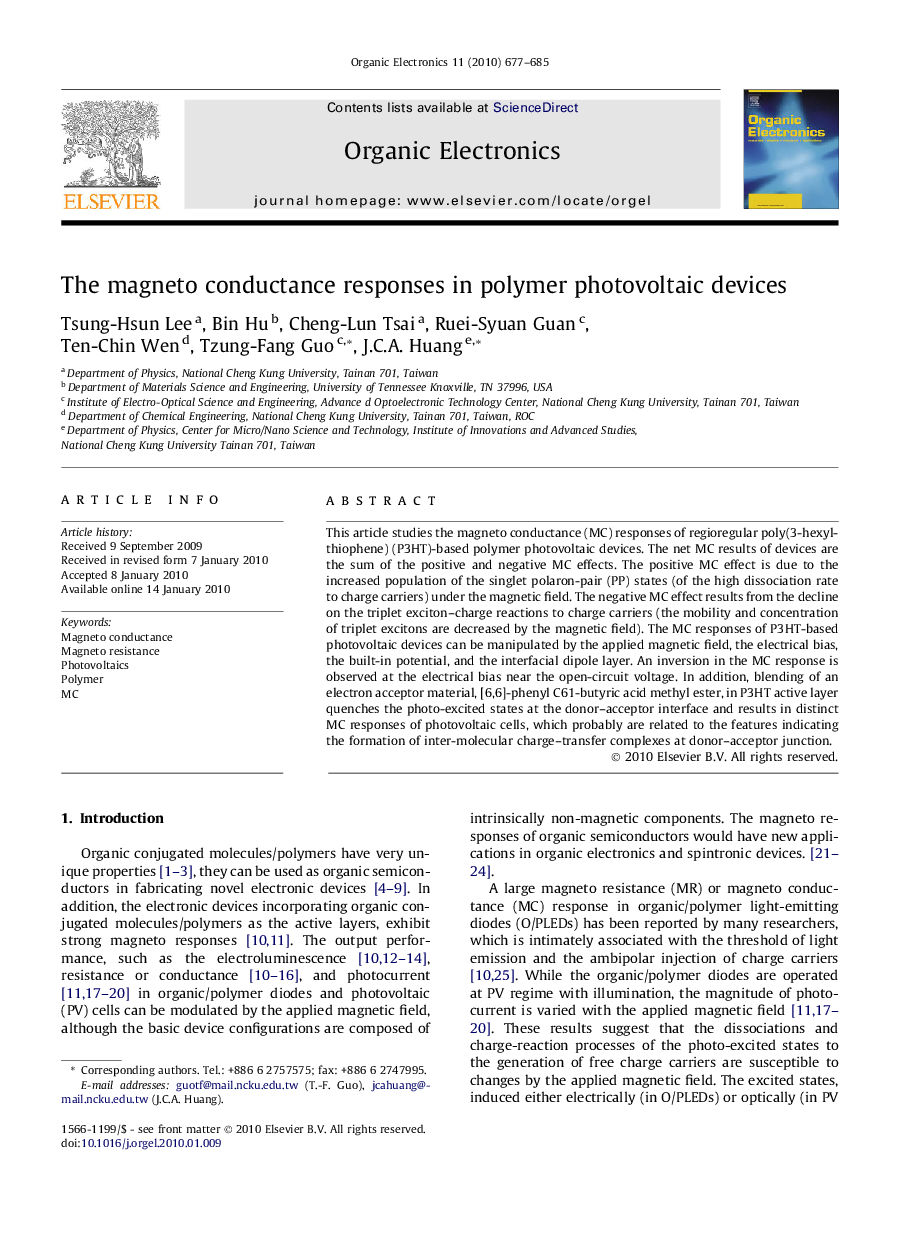| Article ID | Journal | Published Year | Pages | File Type |
|---|---|---|---|---|
| 1268032 | Organic Electronics | 2010 | 9 Pages |
Abstract
This article studies the magneto conductance (MC) responses of regioregular poly(3-hexylthiophene) (P3HT)-based polymer photovoltaic devices. The net MC results of devices are the sum of the positive and negative MC effects. The positive MC effect is due to the increased population of the singlet polaron-pair (PP) states (of the high dissociation rate to charge carriers) under the magnetic field. The negative MC effect results from the decline on the triplet exciton-charge reactions to charge carriers (the mobility and concentration of triplet excitons are decreased by the magnetic field). The MC responses of P3HT-based photovoltaic devices can be manipulated by the applied magnetic field, the electrical bias, the built-in potential, and the interfacial dipole layer. An inversion in the MC response is observed at the electrical bias near the open-circuit voltage. In addition, blending of an electron acceptor material, [6,6]-phenyl C61-butyric acid methyl ester, in P3HT active layer quenches the photo-excited states at the donor-acceptor interface and results in distinct MC responses of photovoltaic cells, which probably are related to the features indicating the formation of inter-molecular charge-transfer complexes at donor-acceptor junction.
Related Topics
Physical Sciences and Engineering
Chemistry
Chemistry (General)
Authors
Tsung-Hsun Lee, Bin Hu, Cheng-Lun Tsai, Ruei-Syuan Guan, Ten-Chin Wen, Tzung-Fang Guo, J.C.A. Huang,
